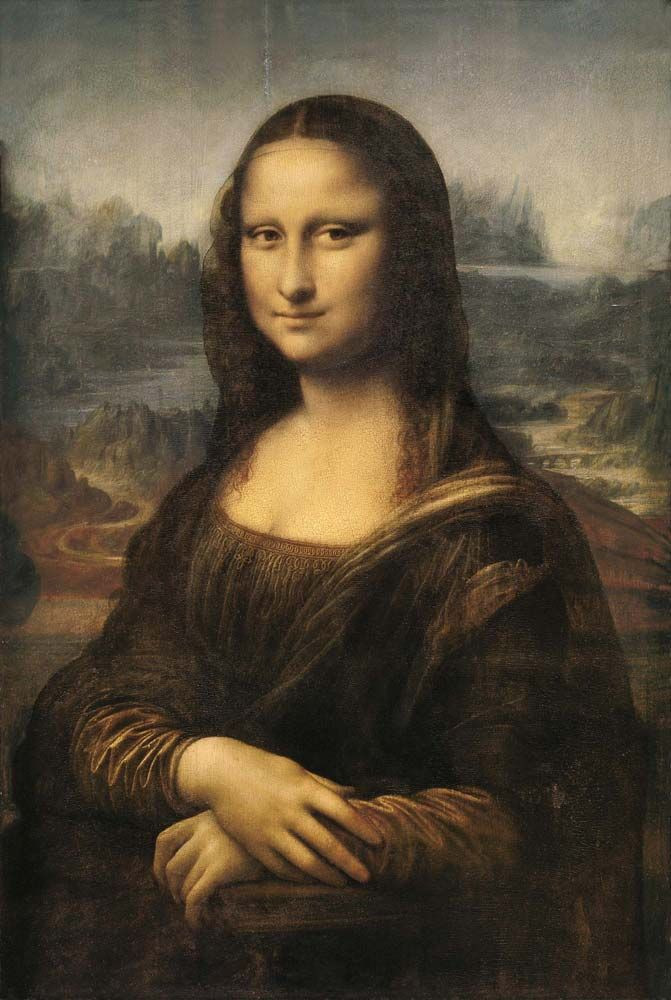The Mona Lisa, arguably the world’s most recognized painting, continues to captivate art enthusiasts and casual observers alike. Painted by the quintessential Renaissance master, Leonardo da Vinci, the artwork’s enigmatic smile and captivating gaze have fueled centuries of intrigue. One of the most fundamental questions surrounding this iconic masterpiece is: Where Was The Mona Lisa Painted? The answer takes us back to the heart of the Italian Renaissance, specifically to Florence, Italy.
 Leonardo da Vinci: Mona Lisa
Leonardo da Vinci: Mona Lisa
Florence: The Birthplace of the Mona Lisa
Leonardo da Vinci in Florence
The story of where the Mona Lisa was painted begins in Florence, a vibrant hub of art, culture, and intellectual ferment during the early 16th century. Leonardo da Vinci, already an established artist, was residing and working in this dynamic city. The period between 1503 and 1519 is widely accepted as the time frame during which Leonardo embarked on and likely continued to work on the Mona Lisa. Florence in this era was the epicenter of the High Renaissance, a period characterized by a renewed interest in classical antiquity, humanism, and groundbreaking artistic innovations.
Leonardo’s presence in Florence placed the Mona Lisa directly within this rich artistic context. He was surrounded by other masters like Michelangelo and Raphael, fostering an environment of creative competition and exchange. Florence provided not only the artistic inspiration but also the patrons and resources necessary for Leonardo to undertake such a significant work. It was in this Florentine atmosphere that the initial brushstrokes of the Mona Lisa were laid down, marking the genesis of a painting that would transcend time and geography.
The Studio of a Renaissance Genius
While the precise location of Leonardo’s studio in Florence where he painted the Mona Lisa isn’t definitively documented, it’s understood to have been within the city. Renaissance artists typically maintained workshops where they would execute their commissions, often with the assistance of apprentices and assistants. These studios were not just places of work but also centers of experimentation and innovation.
Imagine Leonardo in his Florentine studio, surrounded by pigments, brushes, and various artistic tools. The studio would have been a space where he meticulously applied layers of thin oil glazes, a technique characteristic of his style and evident in the Mona Lisa. The poplar wood panel itself, the very foundation of the painting, speaks to the materials readily available in Italy at the time. The controlled environment of his studio allowed Leonardo to work on the portrait intermittently over several years, as historical accounts suggest, patiently building up the subtle details and sfumato that define the painting’s ethereal quality. It was within these studio walls in Florence that the Mona Lisa gradually emerged, shaped by the Florentine light and Leonardo’s unparalleled artistic vision.
Beyond Florence: The Journey of the Mona Lisa
From Florence to France
Although conceived and begun in Florence, the Mona Lisa‘s journey didn’t end there. Leonardo da Vinci spent his later years in France, invited by King Francis I. It is believed that Leonardo took the Mona Lisa with him when he moved to France, suggesting he considered it an ongoing work, perhaps never truly feeling it was finished. This relocation marks the first major geographical shift for the painting, moving it from its Italian birthplace to the French royal sphere.
Centuries in French Palaces and the Louvre
After Leonardo’s death in France in 1519, King Francis I acquired the Mona Lisa. It became part of the French royal collection, residing in various royal palaces for centuries. This period saw the Mona Lisa transition from a privately held artwork to a treasure of the French monarchy. It was during the French Revolution (1787–99) that the royal collection, including the Mona Lisa, was declared the property of the French people.
Subsequently, at the turn of the 19th century, the Mona Lisa found its home in the Louvre Museum in Paris. Except for periods of evacuation during wars and brief tours for exhibition, the Louvre has been its permanent residence since.
The Mona Lisa in the Louvre Today
Today, the Mona Lisa is enshrined in the Louvre Museum, Paris, where it draws millions of visitors annually. Housed behind bulletproof glass, it remains an object of pilgrimage for art lovers worldwide. While its origins are firmly rooted in Florence, Italy, the Mona Lisa‘s current location in the Louvre solidifies its status as a global icon, transcending national boundaries and belonging to the world’s cultural heritage.
 Leonardo da Vinci: Mona Lisa
Leonardo da Vinci: Mona Lisa
Conclusion
In conclusion, the Mona Lisa was painted in Florence, Italy, during the vibrant Italian Renaissance, primarily between 1503 and 1519. It was within the studio of Leonardo da Vinci in Florence that this masterpiece began to take shape. While now housed in the Louvre Museum in Paris, its artistic genesis remains firmly planted in the Florentine soil of the early 16th century. Understanding where the Mona Lisa was painted not only grounds the artwork in a specific geographical location but also connects it to a pivotal moment in art history, enhancing our appreciation for its enduring legacy.

